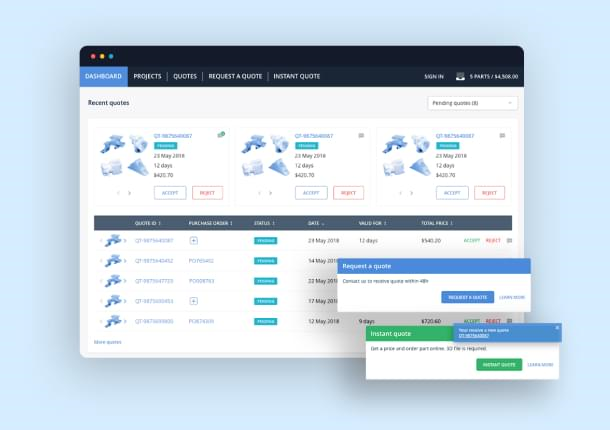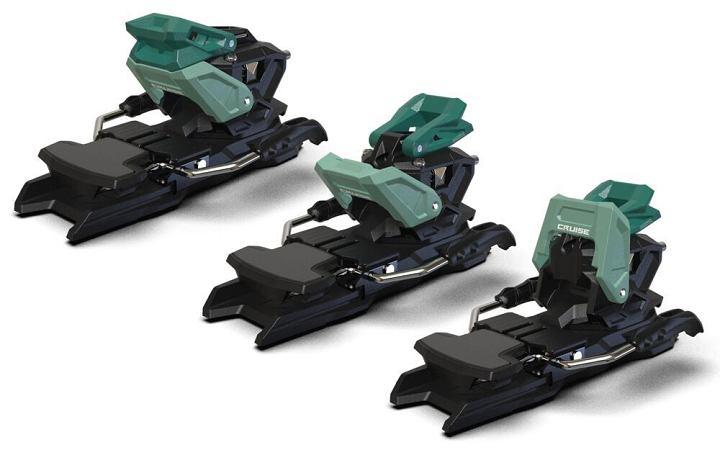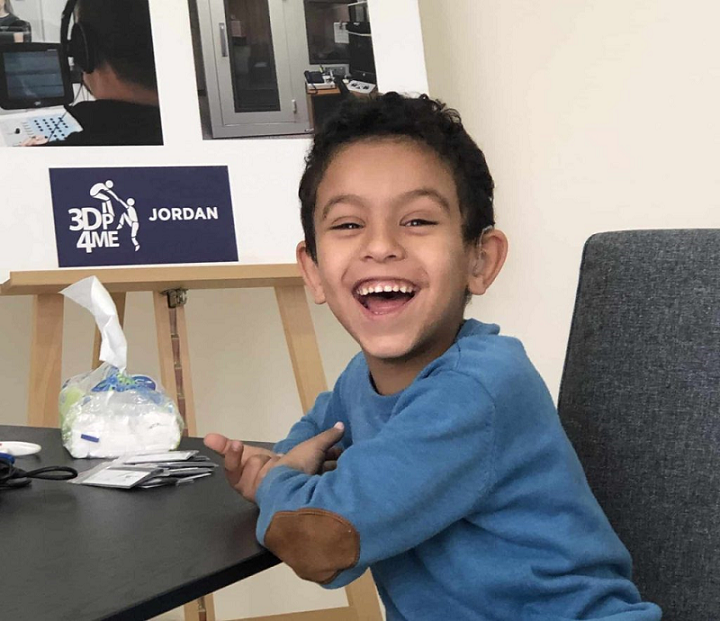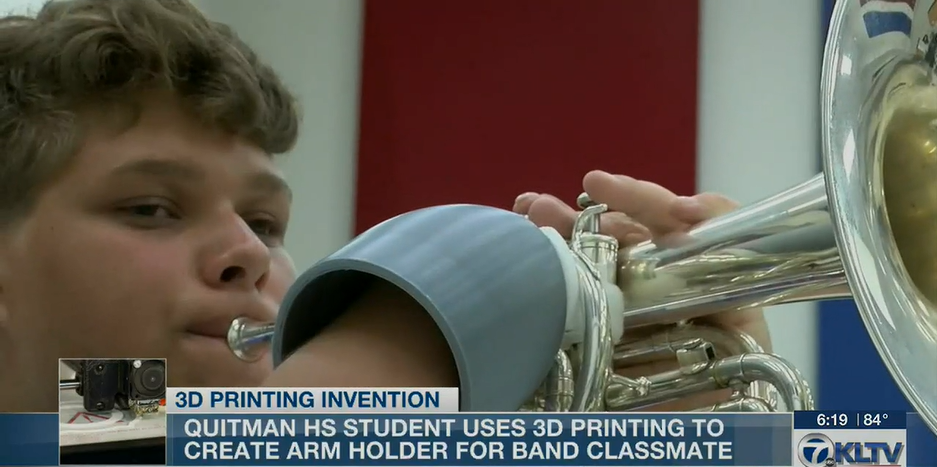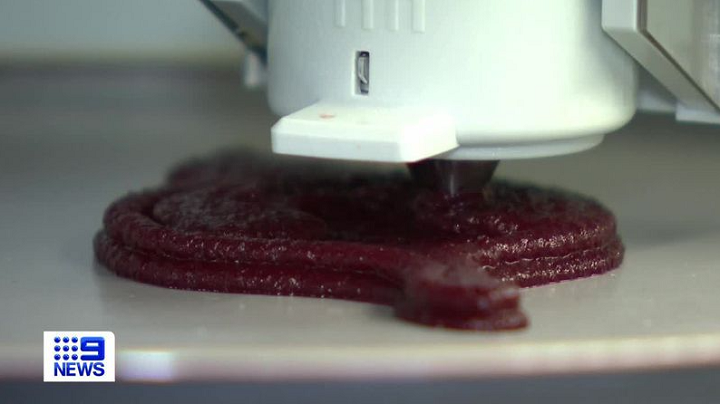Kicking off 3D Printing News Briefs, Nexa3D is celebrating a milestone achievement, AMFG is partnering with Elite Mold and Manufacturing Inc., and Lehvoss will present several application examples of its polymer materials at an upcoming trade fair. 3DP4ME is using 3D printing to provide hearing aids to refugee children in Jordan, and a high school student used the technology to help a fellow marching band member on the field. Finally, researchers in Perth are 3D printing food for aged care residents.
Nexa3D Surpasses 1,000 Ultrafast 3D Printers Deployed
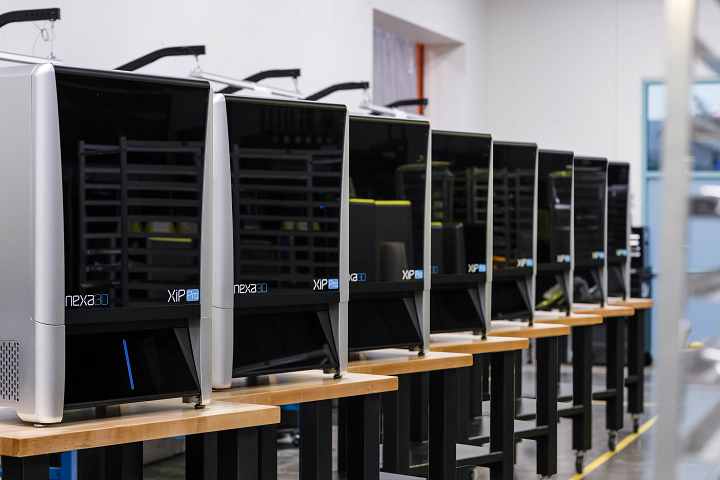
XiP Pro is the latest industrial resin 3D printer aimed at additive production applications at scale.
Ultrafast polymer 3D printer provider Nexa3D announced a major milestone: in its third year of commercial activity, the company has surpassed 1,000 3D printers deployed around the world. Nexa3D’s 3D printing approach allows business to increase their efficiency and productivity, and has led to fast growth and widespread adoption of its printer portfolio, which includes six different systems. The professional desktop XiP was launched 18 months ago, with a large build volume volume and high print speed that enables the fabrication of quick-turn prototypes and on-demand production parts, and the industrial XiP Pro, introduced at RAPID just three months ago, is used by several major consumer and industrial product brands for reliable, fast, and repeatable production of mission-critical polymer components at scale. Also included in Nexa3D’s portfolio is its QLS line of high-throughput, fast-cycle SLS 3D printers, which manufacturing service providers and industrial customers use to scale additive production. Manufacturers can save tens of thousands of dollars in powder waste a year by using the company’s “zero-waste” QLS 230 and QLS 236 printers, which help recycle and reuse powder from other SLS equipment.
“Surpassing 1000 ultrafast 3D printers deployed worldwide is a remarkable accomplishment that showcases the trust and confidence our customers have placed in our technology,” said Nexa3D CEO and Co-Founder Avi Reichental. “We are thrilled to witness the transformative impact our solutions have had on businesses across industries, and we remain committed to delivering cutting-edge technology that empowers manufacturers to achieve their goals.”
Elite Mold and Engineering Inc. Using AMFG’s MES Software
AMFG, a leading provider of MES software for manufacturing, announced that Elite Mold and Engineering Inc. is using its solution to further establish, and grow, its additive manufacturing operations. Elite is committed to using a variety of manufacturing processes, illustrated by its addition of a Carbon M2 3D printer last year to complement its ten molding machines, ten CNC machines, and two EDM machines. This purchase led to the company looking for high-quality software solutions, with an emphasis on customer confidence and usability, and AMFG’s offering fits the bill. Its Order Management portal offers a fully automated quoting solution, which allows customers to easily upload their own CAD files and choose materials and other parameters. Then, a price quote is instantly generated, with an option to immediately purchase and order for a much quicker, easier process. AMFG’s customizable portal has been implemented onto Elite’s website, blending in with its own message and branding for a smooth transition.
“We looked at several online quoting platforms, AMFG checked all the boxes for what we needed to support our growing customer base in the 3D additive market. The ease of onboarding and the back end support was critical to our decision to use AMFG as our provider,” said Elite CEO Paul Patrash.
Lehvoss Group to Present Polymer Technology Breakthroughs at Fakuma
At this year’s Fakuma international trade fair for plastics processing, October 17-21 at Messe Friedrichshafen, Hamburg-based Lehvoss Group will present several of its breakthroughs in polymer technology, showing how its solutions can enable new technology and add value in numerous applications. First, the company is working on the next generation of masterbatches and additives, with the main factor being weight reduction. With its new propellant masterbatches, for use in standard injection molding and extrusion processes, it’s possible to make automotive components that are 24% lighter, and they can also be used in the food industry, due to their physiological harmlessness. Lehvoss Group also developed halogen-free masterbatches for flame retardancy, based on nitrogen, phosphorus, and mineral additives with high intumescence.
The company also plans to demonstrate how the high-performance plastics developed by its Customized Polymer Materials division can increase product performance. There will be several examples at its Fakuma booth, including an injection molded carbon fiber compound e-bike frame with 60% increased material rigidity and transmission components for an e-bike motor with tribologically modified thermoplastics that offer a longer service life. Other examples include high-strength, cold-impact resistant components for ski bindings, powder-coated components for car belt systems with optimized tribological properties, and Lehvoss Group’s Large Format Additive Manufacturing (LFAM), also known as Fused Granulate Fabrication (FGF), which enables up to 80% cost savings in large component manufacturing.
3DP4ME 3D Printing Hearing Aids for Refugee Children in Jordan
In a great example of advanced manufacturing helping to bridge the gap to healthcare access for underserved communities, US-based nonprofit organization 3DP4ME uses 3D scanning and printing to serve real human needs and improve lives. The humanitarian organization 3D prints hearing aids for refugee children in Jordan, who wouldn’t have access to that kind of customized solution otherwise. Hearing loss is a major challenge in Syria and Jordan, influenced by sound pollution, medication toxicity, genetic disorders, and chronic middle ear infections, and the consequences are far-ranging. The lack of quality hearing aids and related healthcare can result in communication difficulties, social isolation, compromised educational opportunities, and limited employment prospects, but 3DP4ME is focused on using 3D printing to create a lasting impact through more inclusive healthcare in these regions.
The organization partners with other international NGOs to share expertise and resources in order to transform the lives of refugee children with hearing impairments. 3DP4ME uses a personalized approach, and its partners extend the impact by sharing their knowledge, helping to adopt localized manufacturing, providing a comprehensive medical support system, and advocating for accessibility and equal opportunities for those with disabilities. As part of the Hearing Express Project, the nonprofit has provided custom-fit hearing aids to 52 children, and recently received a list of 500 potential candidates with hearing loss to help them get in touch with individuals in need. 3DP4ME advisor Sam Onukuri, former head of 3D Printing Innovation and Customer Solutions at Johnson & Johnson, believes that the efficiency and clinical outcomes of surgeries can be transformed through the digital workflow for 3D printing, instruments and templates for medical devices, and that it “enables personalized solutions for patients and democratizes access to healthcare.”
3D Printed Instrument Arm Holder for Marching Band Student
Speaking of using 3D printing to improve lives in very practical ways, a junior at Quitman High School in Texas helped fabricate an instrument arm holder for a fellow marching band member. Cole Ochoa, an incoming freshman who typically plays French horn, found out he had to play mellophone on the field, which requires two hands—a challenge for the 9th grader, who’s missing his right hand. Band director Michael Barron wanted to create a tool that would help Ochoa hold the instrument while marching, and collaborated on the project with high school engineering teacher David Cross, who teaches students how to use the school’s 3D printers to make small trinkets and desk toys. Cross recommended 11th grader Nehemiah Faulkner for the summer project, and as Faulkner plays clarinet in the same marching band as Ochoa, it was a perfect match. He got right to work, using the skills he’d learned in engineering class to create a 3D printed holder that would keep Ochoa’s arm in place while marching and playing his instrument.
“He [Cross] was like, I got a kid that’s gonna help, and he recommended Nehemiah, who just so happens to be my band kid. Fifteen year old kid’s over there measuring everything, it was incredible to watch a kid that young have that ability,” Barron said.
You can watch a news video of the heartwarming story here.
Researchers 3D Printing Food for the Elderly
Researchers from Edith Cowan University and aged care agency Brightwater in Australia have come up with a way to increase fruit and vegetable intake for elderly residents: 3D printing their food. Many elderly people have difficulty swallowing or chewing their food, also known as dysphagia, which can lead to malnutrition, so scientists have been working to make texture-modified foods that are easier to ingest, but more appetizing than just a pile of soft goo. In this instance, produce is chopped up, freeze-dried, and then transferred into cylinders to be 3D printed into small but flavorful pureed meals that are filled with nutrients, including additional vitamins, minerals, and protein. The researchers hope to move beyond 3D printed “nutritional top-ups” to full meals within 12 to 18 months, and in an effort to reduce food waste, are also working with the agricultural industry to source imperfect produce for their 3D printed culinary delights.
Dr Liezhou Zhong from Edith Cowan University said, “All we have done is try to create beautiful presentation, more nutritious food and a more enjoyable dining experience for them to stimulate their appetite so they can eat more.
“We can provide them with high energy, long life, lightweight fruit, vegetables or other food products.”
In the future, the team’s work could go beyond aged care facilities to schools and the military. You can watch the news video here.
Subscribe to Our Email Newsletter
Stay up-to-date on all the latest news from the 3D printing industry and receive information and offers from third party vendors.
You May Also Like
New Report: Semiconductor Industry to See $1.4B in 3D Printing Revenues by 2032
“The semiconductor sector has become the most strategically significant area of global industry.” Truer words are hard to come by when it comes to the modern world, and they are...
Will Photonic-Crystal Lasers Revolutionize 3D Printing?
Powder bed fusion (PBF) for metals and polymers predominantly utilizes lasers as the primary heat source. Some directed energy deposition (DED) technologies also employ lasers, while various vat polymerization methods...
3D Printing Unpeeled: Orbex Investment, IndoMIM and HP, Ultrasonic Waves
INDO-MIM has bought three HP Metal Jet S100 printers, operating two in India and one in Texas. This is a win for HP because the company has deep experience in...
3D Printing Webinar and Event Roundup: April 21, 2024
It’s another busy week of webinars and events, starting with Hannover Messe in Germany and continuing with Metalcasting Congress, Chinaplas, TechBlick’s Innovation Festival, and more. Stratasys continues its advanced training...


